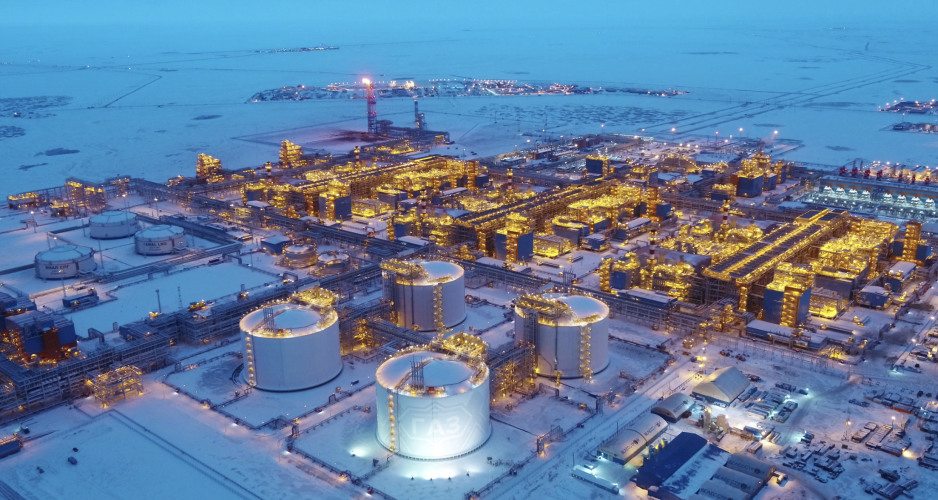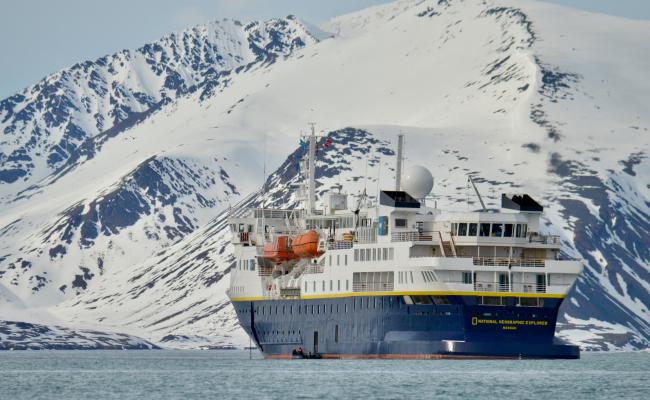Russia to Export 100m tons of LNG by 2030

Novatek’s Yamal LNG plant. (Source: Novatek)
Russia announced plans to liberalize Arctic liquified natural gas exports in an effort to boost production to 100m tons by 2030. Two older nuclear icebreakers may have their lifetime extended to help keep shipping lanes open to transport the gas to Asia.
Last week Russia’s Ministry of Energy announced a roadmap to significantly boost liquified natural gas (LNG) production in Russia, especially in the Arctic.
The effort relies on a combination of liberalizing the country’s Arctic LNG sector and turning to domestic technologies to construct large-tonnage LNG plants.
According to the Ministry’s plans, future LNG projects will use at least 80 percent domestic technologies. In order to reduce the dependency on foreign technologies, such as heat exchangers and turbines, Russia has been engaged in import substitution of LNG technologies since 2014.
This has led to the development of e.g. Novatek’s “Arctic Cascade” technology which was designed for around 1m tons per year but has already been scaled to 2-3m tons per annum.
In a statement Russian Prime Minister Mikhail Mishustin said that “the government is working to increase the volume of production and export of liquefied natural gas. A bill has been developed that will help to more actively use the capacities of the Arctic routes and transport LNG to the countries of the Asia-Pacific region. The government proposed adding to the list of fields from which LNG export is allowed and making new license areas available.”
The strategic task and future for our gas exports is the development of LNG production.
According to Mishustin, these efforts will result in Russia increasing its LNG production to 100m tons per year by 2030.
Deputy Prime Minister Alexander Novak also spoke on the effort last week during a meeting with representatives from Gazprom, Novatek, Rosneft, and Atomflot.
"The strategic task and future for our gas exports is the development of LNG production, which in the medium term should reach at least 100 million tons per year. To date, according to implemented projects, production is about 33 million tons. Taking into account projects under construction, plants in Ust-Luga and Arctic LNG 2, Russia will produce 66 million tons of LNG per year,” Novak explained during the meeting.
Russia expects that its liberalization efforts will provide the additional ~35m tons in annual production to reach 100m tons by 2030.
Older nuclear icebreakers
Transporting additional volumes of LNG along the Northern Sea Route will further enhance the importance of Russia’s icebreaker fleet. It is currently in the process of large-scale modernization and expansion of its fleet. Three new nuclear icebreakers of the new Arktika-class have been launched, with four more to follow by the next decade.
Also read
Russia’s operator of nuclear icebreakers, Atomflot, is looking to extend the lifetime of its two oldest vessels, Taimyr and Vaigach.
Both icebreakers had their reactor time increased from 200,000 hours to 235,000 hours in 2021. Now Rosatomflot is planning a further extension of 25,000 hours. This change would push the vessels’ retirement from 2027/28 to 2031/32.
With shipping volume forecasted to increase exponentially in the coming 3-5 years according to Russian authorities, to 80m tons by 2024 and 150m tons by 2030, Russia can not afford to retire two nuclear icebreakers.
The two vessels are key to operating and escorting bulk, LNG and oil carriers in the shallow waters of the Gulf of Ob and the Yenisey Gulf. Ships transporting nickel from Norilsk Nickel and crude oil from Gazprom Neft’s Novoportovskoye project rely on the icebreakers to keep shipping lanes open during winter and spring.
More Arctic-capable vessels
Shipping traffic across the Arctic has seen substantial increase over the past decade, with Norwegian and Russian waters in the High North experiencing double-digit annual growth. Traffic in Norway’s Barents and Norwegian Seas has grown more than four-fold over the ten-year period from 2009-2018.
An increase in shipping along the NSR, naturally also means a greater number of vessels in Norway’s waters. And more ice-capable ships are being readied.
According to the Russian Maritime Register the number of ice-capable vessels ready to sail the Northern Sea Route, will expand significantly in the coming years. Currently more than 50 ships with an ice-class of Arc4 or higher are under construction.
These include a combination of lower ice-class Arc4 and higher class Arc7 oil and LNG carriers for both Rosneft’s Vostok Oil project and Novatek’s Arctic LNG 2.


